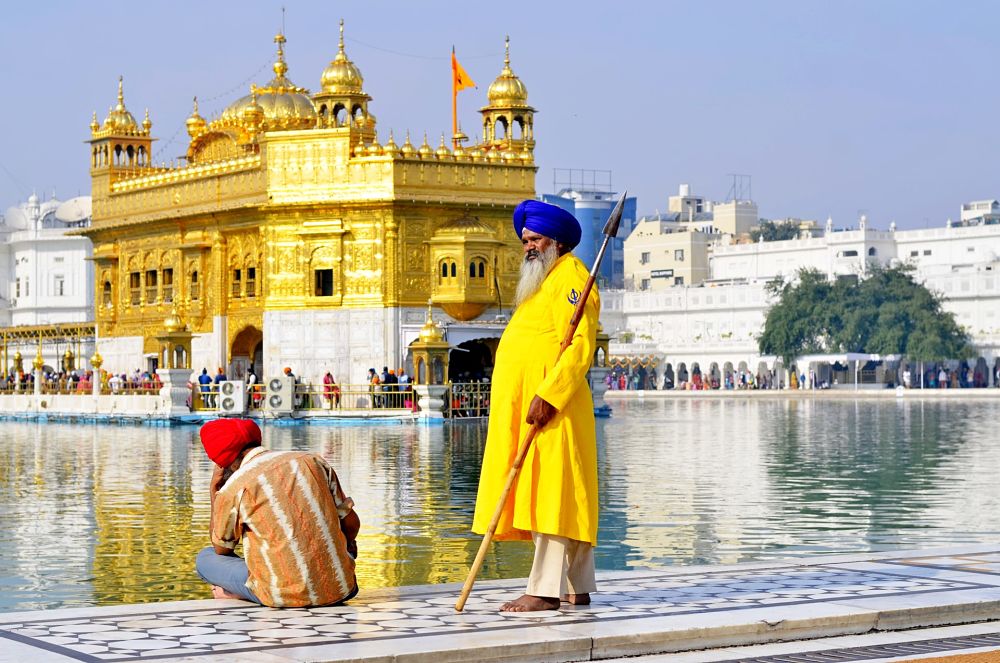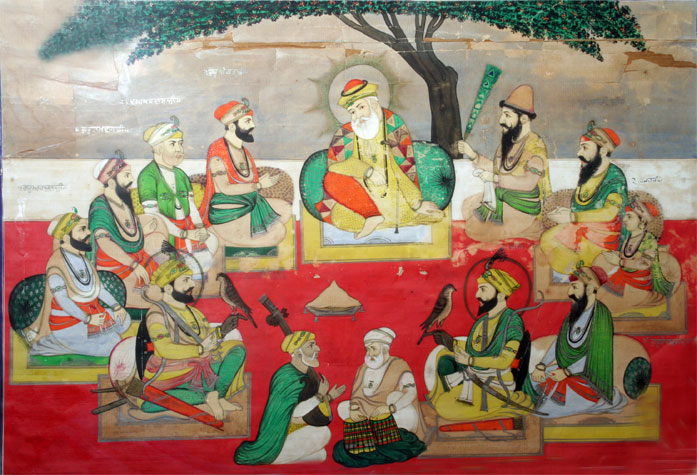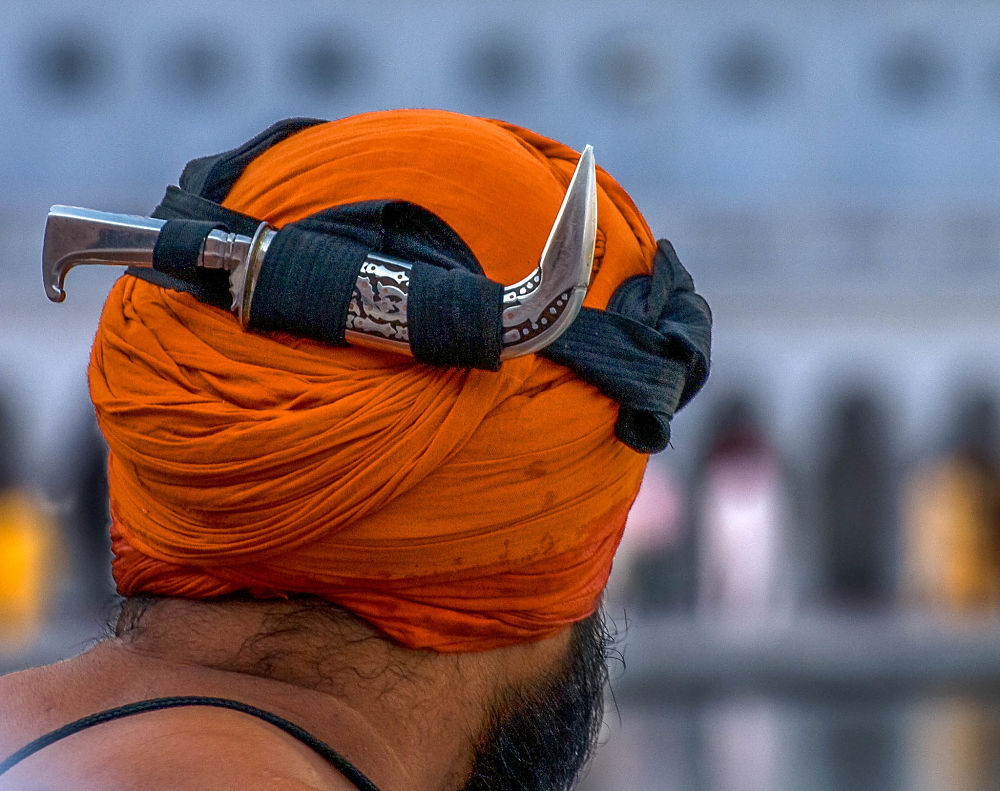A Brief Introduction to Sikhism
Looking for information on the religion of Sikhism?
Then that's exactly what we've got for you!
In our quick guide to Sikhism we'll explore more about the origins of the religion, the belief system and where Sikhs live in the world.
Sikhism was founded in the 16th century in the Punjab, India. So it's been around for a long time!
The religion was established by Guru Nanak Dev Ji, who promulgated a message of devotion and emphasised the importance of remembering God at all times.
Sikh means ‘disciple’, therefore Sikhs are seen as the disciples of God who follow the teachings within the Guru Granth Sahib (Sikh holy book).
Let's learn more about this fascinating world religion!
What are the Origins of Sikhism?
Although the Sikh religion was founded by Guru Nanak Dev Ji, he passed on his teachings to nine gurus, who along with Guru Nanak Dev Ji became known as the ‘Ten Gurus’, these are (in order):
1. Guru Nanak Dev Ji – the founder of the Sikh religion
2. Guru Angad Dev Ji – created the ‘Gurmukhi’ (written Punjabi) which the Guru Granth Sahib is written in.
3. Guru Amar Das Ji – established ‘Guru Ka Langar’ (still served in all Gurdwaras) which saw all rich and poor eating together and becoming one no matter what caste difference they may have been.
4. Guru Ram Das Ji – founded Amritsar and began the creation of the Golden Temple in Amritsar which is seen as a very important and spiritual place for Sikhs.
5. Guru Arjan Dev Ji – completed the construction of the Golden Temple in Amritsar and created the ‘Sukhmani Sahib’ (a prayer that for Sikhs to read every morning).
6. Guru Hargobind Singh Ji – was the first guru who took up a sword to defend the religion and urged anyone to help the weak and vulnerable.
7. Guru Har Rai Singh Ji - devoted his life preaching the teachings of Guru Nanak Dev Ji.
8. Guru Harkrishan Sahib Ji – became a symbol of ‘purity’ and emphasised the importance of speaking the truth and believing in Sikhism.
9. Guru Tegh Bahadur Singh Ji – founded the town of Anandpur, which now has a holy temple called ‘Anandpur Sahib’. He was killed for supporting his religion and refusing to convert to Islam during the unrest between India and Pakistan regarding Kashmir.
10. Guru Gobind Singh Ji – created the ‘Khalsa’ (brotherhood). He came out into a group of people in 1699 with a sword dripping of blood and asked who was ready to give their life for Sikhism. To which five males came forward, Guru Gobind Singh Ji led them all into a tent. He gave these five men ‘Amrit’ (holy water) and baptised them as the ‘beloved five’, who were ready to give their life for their religion. These became his and the Sikh religions disciples, as they did not fear death in the name of their religion. This day is celebrated annually as ‘Vaisakhi’.
All these teachings are still emphasised within the Sikh religion. Guru Gobind Singh Ji decided that there was no need for a further living soul of a guru and therefore named the 11th guru as ‘Guru Granth Sahib Ji’. This guru would last for eternity, in the form of the Sikh transcripts which everyone can read and hear today.
Guru Nanak with the Other Nine Gurus. Click image to see source.
Where Do Sikhs Live?
The Sikh religion originated in Punjab (northern India). This is where the highest population of Sikhs can be found today, living within towns and villages.
Punjab has many holy ‘gurdwaras’ (temples), which sees many people from the community coming together to pray daily. These ‘gurdwaras’ all have significance and are related to the ten gurus.
There currently is 25.8 million Sikhs worldwide, with 75% of these living in the Punjab.
Currently 2% of all Indians worldwide are Sikhs, with the majority residing in Canada, America and the United Kingdom, Middle East and Australia.
Sikhs can also be found in smaller countries like Mauritius, Nepal and Fiji. It is also worth noting that a minority of Sikhs do not follow the principles and do not pray daily, however they still regard themselves as Sikhs and therefore are included within these figures.

The "Golden Temple" is the holiest Sikh gurdwara located in the city of Amritsar, Punjab. Photo by Laurentiu Morariu on Unsplash
What do Sikhs Believe?
Sikhs believe that there is only one God; he is the creator of life and death.
They believe that god exists throughout our daily lives although he may not be visible; he is with us in spirit everywhere we go (‘Ik Om Kar’).
Equality is a very important element within the Sikh religion, regardless of caste and class all humans are seen as equal. Everyone possesses the same rights, with all men and women being treated equally in the Gurdwara (temple).
This emphasis on equality then sees many people from all ethnical backgrounds being welcomed into the Gurdwara and in to ‘Guru ka Langar’.
They also believe that when a Sikh dies, his or her soul is recreated in another living body whether this is human or an animal. This depends upon what an individual has done in his or her past life, if it is good their soul is relived within a human, if it is not then it is relived in the form of an animal. Therefore, our deeds in a past life lead way to our life in the future; this is a decision that is in the hands of God.
The Sikh religion encourage that life should be lived in truth and justice. Sikhs should earn their money honestly and not take away from others and they should only consume what rightfully belongs to them. Sikhs should also undertake a form of ‘sewa’ (service to God), by giving to the needy and helping others, this usually takes place at the ‘Gurdwara’.
Sikhs are required to wear a kirpan at all times, even when you're having a bath! Photo on Flickr (CC BY 2.0) taken by Tony Tarry.
What are The 5 Ks in Sikhism?
Sikhs who are baptised and make a special commitment to Sikhism, go through an ‘Amrit’ ceremony.
They are then known as part of the ‘Khalsa panth’ (brotherhood of all those who have committed).
They are all required to wear the five Ks to represent this unity and spiritual being. These five Ks were given to the five baptised ‘Khalsa’ by Guru Gobind Singh Ji in 1699, on a day that is now known and celebrated as ‘Vaisakhi’.
The five Ks represent:
1. Kesh (hair) – uncut hair and beard as it is given to us by god
2. Kangha (wooden comb) – to be worn in the hair at all times, as a symbol of cleanliness
3. Katchera (shorts) – cotton underwear which symbolise purity
4. Kara (steel bangle) – worn on the wrist to symbolise truth and freedom
5. Kirpan (sword) – to defend the truth
Interesting Facts About Sikhism
- Like Christianity, Sunday is seen as a spiritual day when most Sikhs get together at there local temple and pray.
- Orange and Blue are the colours that reflect the ‘Khalsa’
- Every Sikh has the middle name Singh (males) and Kaur (females)
- Singh means ‘lion’ and Kaur means ‘princess’
You might also be interested in other world religions:
- A Brief Introduction to Islam
- A Brief Introduction to Hinduism
- A Brief Introduction to Christianity
- A Brief Introduction to Buddhism
- A Brief Introduction to Rastafarianism
- A Brief Introduction to Shinto
- A Brief Introduction to Bahai
Main photo by Dollar Gill on Unsplash
By accepting you will be accessing a service provided by a third-party external to https://www.commisceo-global.com./

 +44 0330 027 0207 or +1 (818) 532-6908
+44 0330 027 0207 or +1 (818) 532-6908


